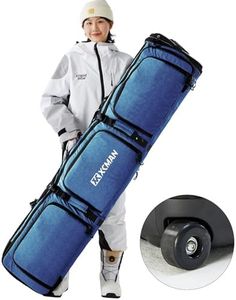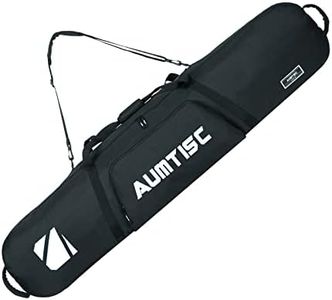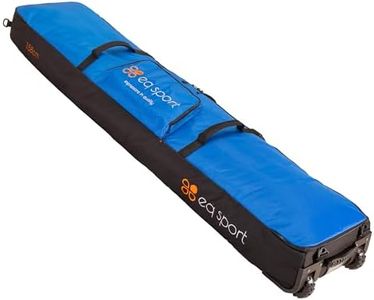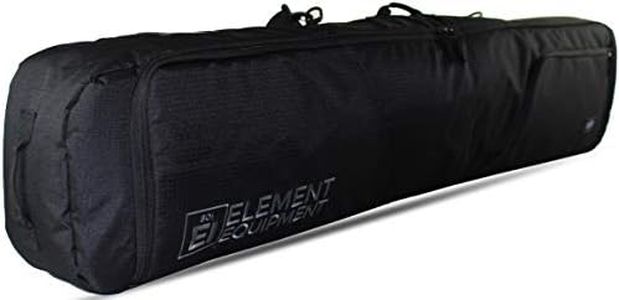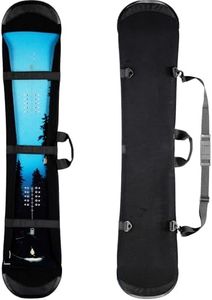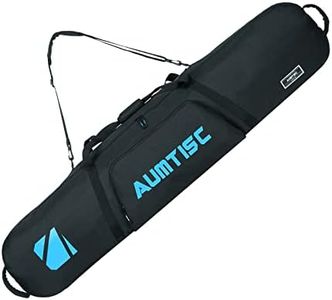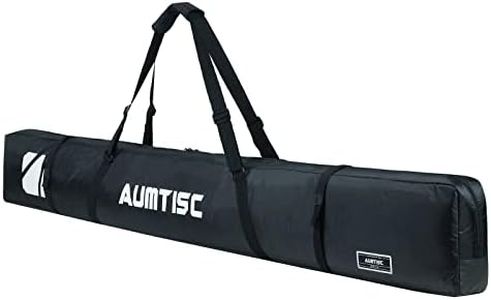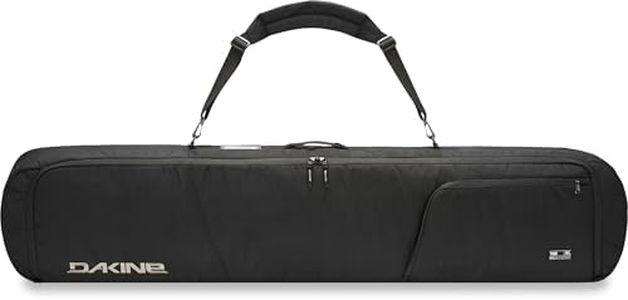We Use CookiesWe use cookies to enhance the security, performance,
functionality and for analytical and promotional activities. By continuing to browse this site you
are agreeing to our privacy policy
10 Best Snowboard Bags
From leading brands and best sellers available on the web.Buying Guide for the Best Snowboard Bags
Choosing a snowboard bag is an important step to keeping your gear protected and making your travel experience easier. Whether you're heading to the local resort or flying to another country, the right bag keeps your snowboard, boots, and accessories safe from damage. Understanding the key features of snowboard bags ensures you get a bag that matches your trip style, board size, and packing needs. There's a big difference between bags suitable for occasional trips and those built for serious travel, so it's important to know what matters most before you buy.LengthLength refers to how long the bag is and is usually measured in centimeters or inches. It's important because your snowboard needs to fit entirely inside the bag for protection. Bags come in different lengths to match various board sizes. A bag that's too short can damage your board or not close properly, while one that's too long may let your gear shift around too much. To pick the right length, measure your snowboard and choose a bag that's equal to or just slightly longer than your board. If you own multiple boards of different lengths, consider the largest one when picking a bag.
PaddingPadding refers to the amount and type of protective material inside the bag. It helps shield your snowboard and equipment from dings, scratches, and impacts, especially during travel. Some bags have full padding throughout the entire bag, while others offer only minimal padding around the tips or no padding at all. If you plan to fly with your snowboard or expect rough handling, a fully padded bag is best. If you're just driving to the local hill and handling your gear gently, less padding might be enough.
CapacityCapacity is about how much gear the bag can hold, including snowboards, boots, outerwear, and other accessories. Some bags are designed for a single board, while others can hold two or more boards and extra gear. The level of capacity you need depends on how much you want to bring and how you travel. If you like bringing backup boards or lots of gear, pick a bag with divided sections or extra room. If you keep packing simple, a smaller single-board bag should work for you.
WheelsWheels allow you to roll your bag instead of carrying it. This is especially useful for air travel and long walks through parking lots or airports. Some snowboard bags include sturdy wheels, while others don't. If you regularly travel long distances or through airports, a wheeled bag will make your experience much easier and reduce strain. If you usually drive and don’t carry your bag far, a non-wheeled bag may be lighter and sufficient.
Material DurabilityMaterial durability refers to how tough and resistant the bag’s fabric is to tears, abrasion, and moisture. Durable materials, like thick nylon or polyester, help protect your snowboard and keep your gear dry in snowy or wet conditions. Bags made from more rugged materials are better for rough travel, while lighter bags may be easier to carry but could wear out faster. Think about how often and where you'll use your bag to decide if heavy-duty material is important for you.
Compartments and OrganizationCompartments and organization describe the number and arrangement of pockets or separated spaces inside the bag. These features help you store boots, helmets, clothing, or smaller gear separately from your snowboard, making packing tidier and helping prevent damage. If you have lots of extras to bring, look for a bag with specific pockets and separators. If you travel light, a simple, single-compartment bag might be all you need.
Carry OptionsCarry options are the different ways you can hold or transport your snowboard bag. Common options include shoulder straps, handles, and backpack straps. The right carry option helps you manage the bag comfortably based on your needs. If you walk long distances, consider padded shoulder straps or backpack-style straps. If you're just moving from car to lodge, basic handles might be enough.
